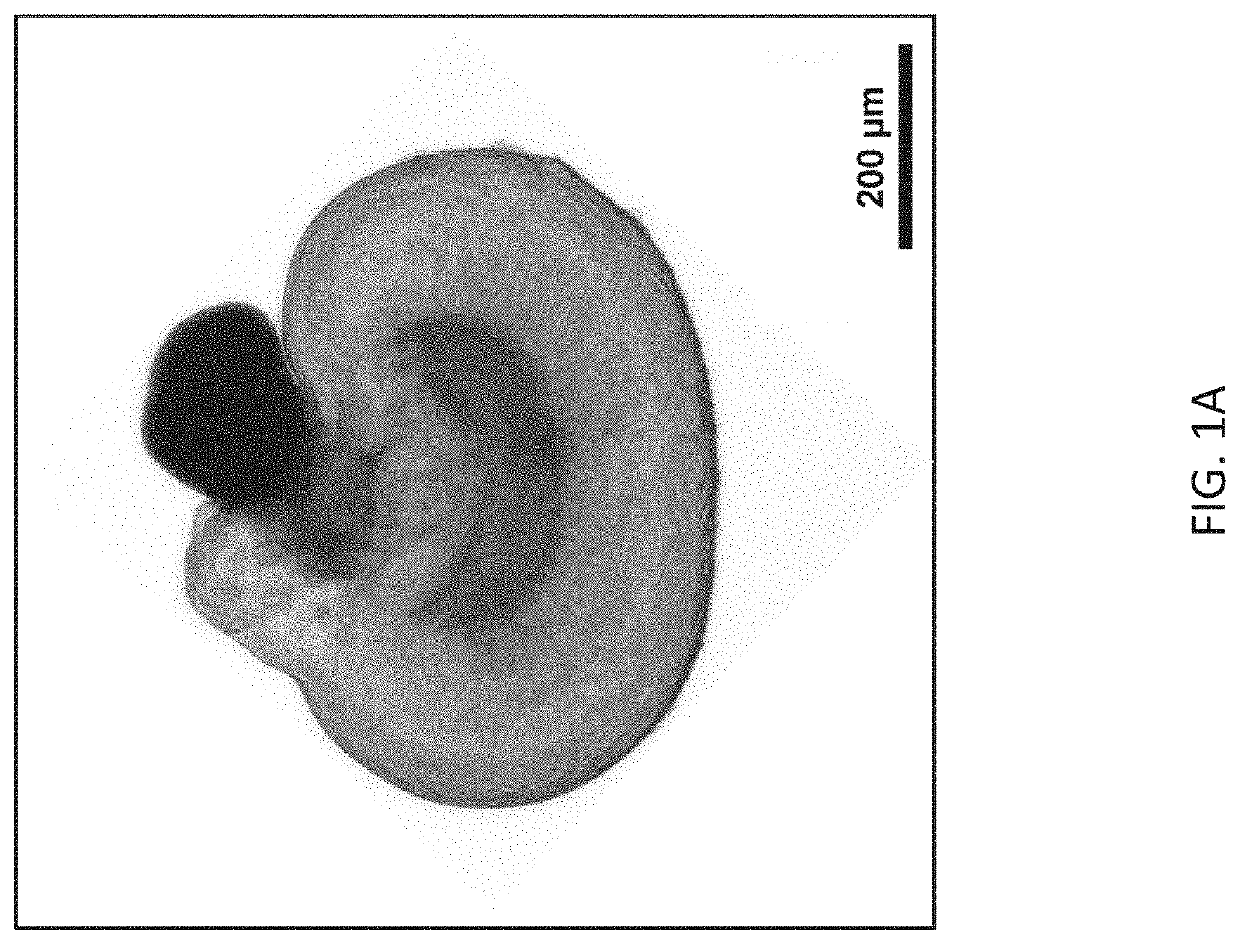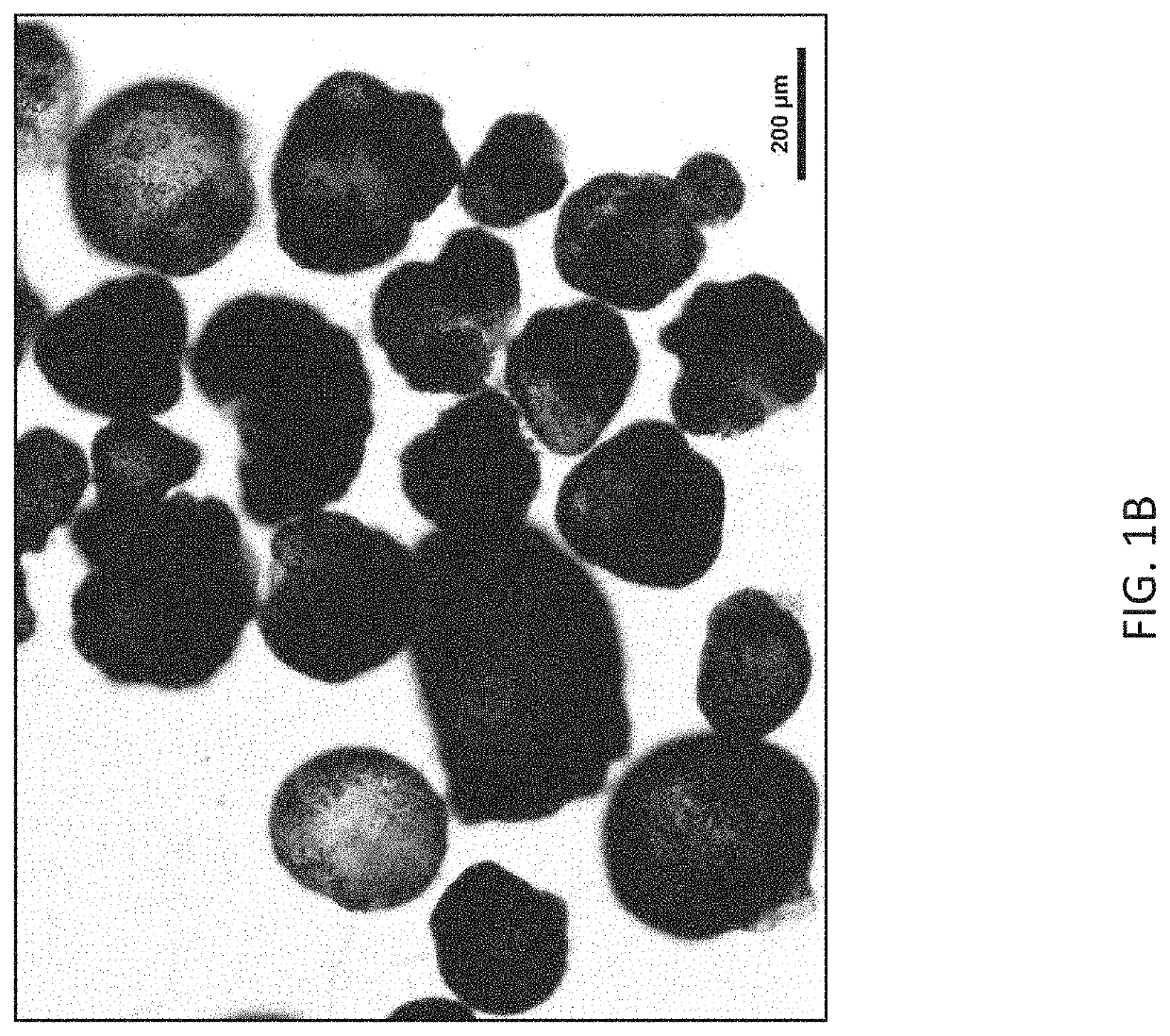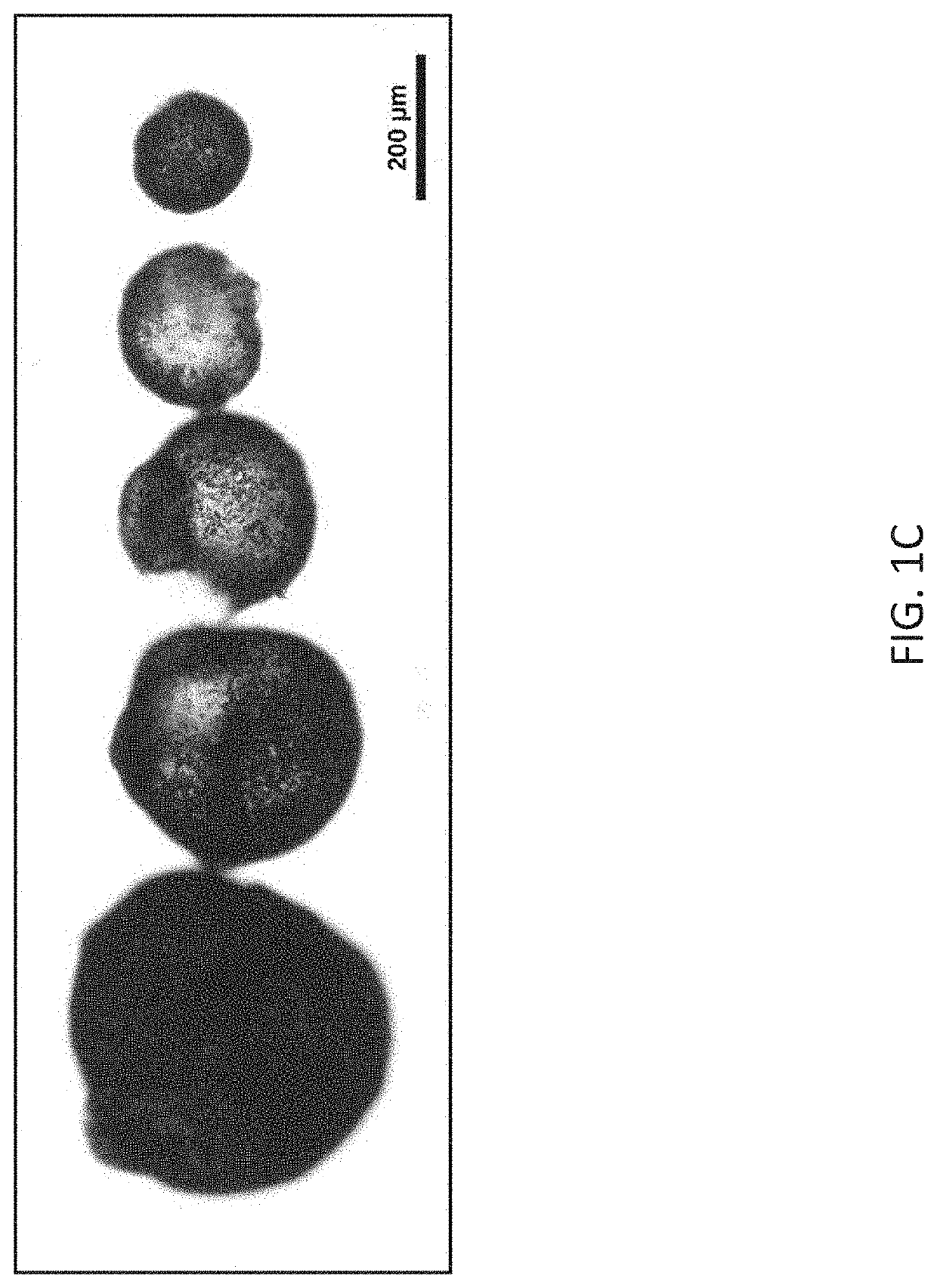Stem cell-derived cell cultures, stem cell-derived three dimensional tissue products, and methods of making and using the same
a stem cell and cell technology, applied in the field of stem cells, can solve the problems of not having a treatment available for and achieve the effect of preventing many retinal degenerative diseases
- Summary
- Abstract
- Description
- Claims
- Application Information
AI Technical Summary
Benefits of technology
Problems solved by technology
Method used
Image
Examples
example 1
n of Retinal Pigment Epithelium from Human Stem Cell-Derived Retinal Organoids
Methods for Generating the Product:
[0133]STEP 1. Generation of Three-Dimensional Retinal Tissue with Functional Photoreceptors from Human iPSCs
[0134]Three-dimensional retinal tissue is prepared according to the method described in Zhong et al., Nature Communications 5:4047 (2014) and U.S. Published Patent Application US 2016 / 0333312, each of which are herein incorporated by reference in its entirety. In such hiPSC-derived 3D retinal organoids, RPE cells are found as a clump at the tip of the retinal organoids.
[0135]STEP 2. Isolation of RPE cells and establishment of induced-primary RPE (ipRPE) culture from human 3D retinas (FIG. 1).[0136]1. Dissect RPE tissue from 3D retinal cups and / or floating RPE tissue aggregates and collect them in the center of the petri dish to aspirate the medium.[0137]2. Rinse with PBS (˜5 mL) 2×.[0138]3. After aspirating the last wash, add DMEM media w / 0.25% collagenase IV (or ot...
example 2
on of Three-Dimensional Tissue Product
[0145]hiPSC-derived 3D retinal tissue is generated as described in Zhong et al., Nature Communications 5:4047 (2014) and US Published Patent Application No. 2016 / 033312. Neural retinal patches (3DNR) are prepared from the 3D retinas using any methods known in the art. For example, hiPSC-derived 3D retinas are opened (e.g., using a tungsten needle or any other method known in the art) in order to expose the inside of the 3D retinal cups, flattened as a retinal flat mount, and retinal explants are obtained. Alternatively, retinal explants can also be obtained directly from 3D retinas using a laser.
[0146]These retinal explants (or patches) are then seeded on top of ipRPE (passage 2) and co-cultured for different periods of time. Under these conditions the 3DNR attach to the RPE monolayer forming a 3DNR / RPE complex. (See FIG. 5). Incorporation of an additional biocompatible component (e.g., a natural or synthetic compound in a liquid or gel form tha...
PUM
 Login to View More
Login to View More Abstract
Description
Claims
Application Information
 Login to View More
Login to View More - R&D
- Intellectual Property
- Life Sciences
- Materials
- Tech Scout
- Unparalleled Data Quality
- Higher Quality Content
- 60% Fewer Hallucinations
Browse by: Latest US Patents, China's latest patents, Technical Efficacy Thesaurus, Application Domain, Technology Topic, Popular Technical Reports.
© 2025 PatSnap. All rights reserved.Legal|Privacy policy|Modern Slavery Act Transparency Statement|Sitemap|About US| Contact US: help@patsnap.com



